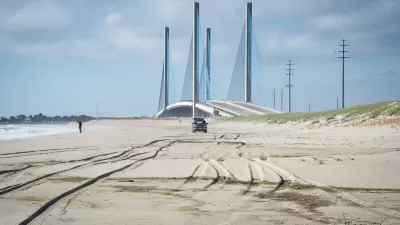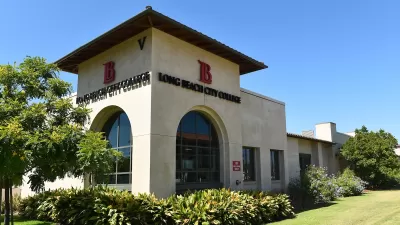Surfers, local businesses and residents alike rallied against kicking in $7 million for an Army Corps of Engineers plan to elevate beaches and erect sand dunes in Long Beach, NY six years ago. Post-Hurricane Sandy, most regret this choice.
The broader $98 million plan spared neighboring coastal communities such as Point Lookout, Lido Beach and Atlantic Beach millions in damages from Sandy, whereas “Long Beach suffered at least $200 million in property and infrastructure losses, according to preliminary estimates,” reports Mireya Navarro. Though it is still early to assess the exact impact of the Army's project, “for the most part, dune barriers acted like soft sea walls made of sand and vegetation that even when flattened or breached still managed to protect places like Westhampton Beach on Long Island, Plumb Beach in Brooklyn, and Bradley Beach in Monmouth County, N.J.,” she adds.
As Long Beach and other local communities look to rebuild, past opposition to sand dunes is being reconsidered. “But some shoreline experts warn that anything short of relocating the buildings and development closest to the ocean only buys time as sea levels rise,” writes Navarro. Orrin H. Pilkey, professor emeritus of earth and ocean sciences at Duke University, “supports dune restoration but also proposes limiting and mitigating development, including not rebuilding destroyed homes next to the beach and elevating others onto stilts to avoid flooding in the event that dunes are overtopped.”
Ultimately, each community will need to decide on how to move forward. “Our preference is to put those dunes back as quickly as possible,” said Julie Schreck, the mayor of Bradley Beach. “I hope other communities will consider trying to emulate nature as much as they can, but I guess every town has to take stock of its own preferences.”
FULL STORY: Resisted for Blocking the View, Dunes Prove They Blunt Storms

Study: Maui’s Plan to Convert Vacation Rentals to Long-Term Housing Could Cause Nearly $1 Billion Economic Loss
The plan would reduce visitor accommodation by 25,% resulting in 1,900 jobs lost.

North Texas Transit Leaders Tout Benefits of TOD for Growing Region
At a summit focused on transit-oriented development, policymakers discussed how North Texas’ expanded light rail system can serve as a tool for economic growth.

Why Should We Subsidize Public Transportation?
Many public transit agencies face financial stress due to rising costs, declining fare revenue, and declining subsidies. Transit advocates must provide a strong business case for increasing public transit funding.

A Visual Celebration of Manhattan’s Chinatown Elder Community, Through Food
Lanterns, cafeteria trays, and community connection take center stage in this stunning photo essay.

How to Make US Trains Faster
Changes to boarding platforms and a switch to electric trains could improve U.S. passenger rail service without the added cost of high-speed rail.

Columbia’s Revitalized ‘Loop’ Is a Hub for Local Entrepreneurs
A focus on small businesses is helping a commercial corridor in Columbia, Missouri thrive.
Urban Design for Planners 1: Software Tools
This six-course series explores essential urban design concepts using open source software and equips planners with the tools they need to participate fully in the urban design process.
Planning for Universal Design
Learn the tools for implementing Universal Design in planning regulations.
City of Santa Clarita
Ascent Environmental
Institute for Housing and Urban Development Studies (IHS)
City of Grandview
Harvard GSD Executive Education
Toledo-Lucas County Plan Commissions
Salt Lake City
NYU Wagner Graduate School of Public Service




























